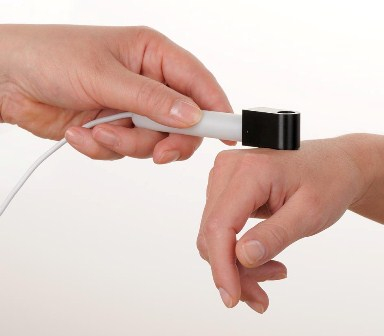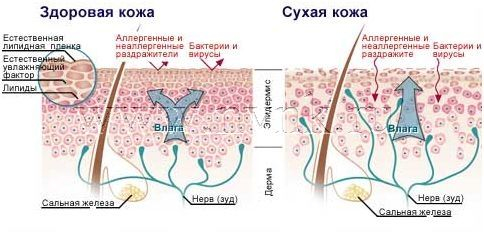Transepidermal water loss (TEWL) – is the amount of condensed water that diffuses through a fixed area of the stratum corneum to the surface of the skin per unit of time.
Water evaporating from the skin is measured using a probe that is in contact with the surface of the skin and contains sensors that detect changes in water vapor density.
In the article estet-portal.com you can read in detail the reasons for the differences in transepidermal water loss, which reflects the degree of skin hydration.
Skin barrier homeostasis provides hydration

The outer layer of the epidermis – the stratum corneum (RL) contributes to the protective properties of the skin and controls transepidermal water loss.
The movement of water through the PC is controlled primarily by flattened corneocytes surrounded by hydrophobic bilamellar lipids, including ceramides, cholesterol, and free fatty acids.
Follow us on Instagram!
The barrier function of skin permeability is basic, and its deterioration leads to the activation of processes that are aimed at restoring skin hydration. The TEWL measurement is the most widely used objective measurement to assess skin barrier function.
TEWL measures the amount of water lost by diffusion through the PC.
Follow us on Facebook
Factors affecting the decrease in skin hydration
• The proportion of PC consisting of alpha-phase lipid bilayers provides a lower TEWL. Therefore, changes in lipid matrix structure caused by environmental factors such as temperature and humidity may be responsible for the differences in TEWL observed under these conditions.
• TEWL in greater numbers on the palms, soles, armpits, forehead and forearm. An increase in TEWL in areas such as the palms and soles is associated with low lipid levels in these areas.
• Regional differences in TEWL may also be related to differences in sweating activity, skin temperature, thickness and microcirculation, as well as size, maturity and sloughing of corneocytes.
Some studies show that TEWL decreases with age, but others have found no relationship between TEWL and age.
• Several studies have found differences in TEWL across ethnic groups. For example, TEWL is higher in Black and Asian skin compared to Caucasian skin.

• Skin care practices also affect TEWL. Detergents such as sodium lauryl sulfate can damage the skin barrier and increase TEWL, while emollients temporarily cover the skin and reduce TEWL.
• Studies have also shown seasonal changes in TEWL and that TEWL is affected by circadian rhythm and sun exposure.
TEPV – it is a research tool that allows to objectively and non-invasively measure one aspect of skin barrier function in dermatological studies and indirectly assess skin hydration.
Thank you for staying with estet-portal.com. Read other interesting articles in the "Experts" section. You may be interested in Photodamage and premature aging: what happens at the cellular level and how to restore the skin







Add a comment